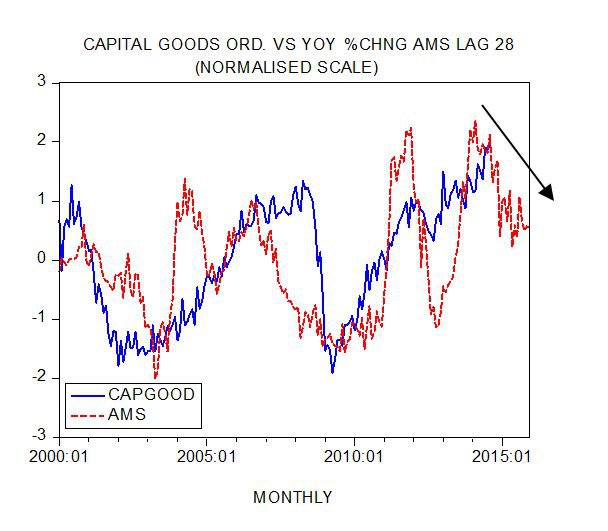Is the Surge in Capital Goods Orders Due to Malinvestment?
Economics / US Economy Oct 15, 2014 - 11:21 AM GMTBy: Frank_Shostak
 Orders for US non-military capital goods excluding aircraft rose by 0.6 percent in August after a 0.2 percent decline in July to stand at $73.2 billion. Observe that after closing at $48 billion in May 2009, capital goods orders have been trending up.
Orders for US non-military capital goods excluding aircraft rose by 0.6 percent in August after a 0.2 percent decline in July to stand at $73.2 billion. Observe that after closing at $48 billion in May 2009, capital goods orders have been trending up.
Most commentators regard this strengthening as evidence that companies are investing both in the replacement of existing capital goods and in new capital goods in order to expand their growth.

Responding to Markets or the Central Bank?
There is no doubt that an increase in the quality and the quantity of tools and machinery (i.e., capital goods) is the key for the expansion of goods and services. But is it always good for economic growth? Is it always good for the wealth-generation process?
Consider the case when the central bank is engaging in loose monetary policy (i.e., monetary pumping and an artificial lowering of the interest rate structure). Such types of policy set the platform for various non-productive or bubble activities.
In order to survive, these activities require real funding, which is diverted to them by means of loose monetary policy. (Once loose monetary policy is set in motion this allows the emergence of various bubble activities).
Various individuals that are employed in these activities are the early recipients of money; they can now divert to themselves various goods and services from the pool of real wealth.
These individuals are now engaging in the exchange of nothing for something. (Individuals that are engaging in bubble activities don’t produce meaningful real wealth. However, by means of the pumped money, they do take a slice from the pool of real wealth. Again, note that these individuals are contributing nothing to this pool).
Now bubble activities, like any non-bubble activity, also require tools and machinery (i.e., capital goods). So various capital goods generated for these activities are in fact a waste of real wealth. This is because the tools and machinery that are generated here are going to be employed in the production of goods and services — that without the monetary pumping of the central bank — would never emerge. In other words, the wrong infrastructure has emerged.
These activities do not add to the pool of real wealth, they are in fact draining it. (This amounts to economic impoverishment). The more aggressive the central bank’s loose monetary stance is, the more drainage of real wealth takes place and the less real wealth left at the disposal of true wealth generators. If such policy persists for too long, this could slow or even shrink the pool of real wealth and set in motion a severe economic crisis.
Strength in Capital Goods Purchases Really Point to a Bubble
We suggest that the strong bounce in capital goods orders since May 2009 is on account of an extremely loose monetary stance by the Fed. Note that the wild fluctuations in our monetary measure AMS after a time lag followed by sharp swings in capital goods orders.
An increase in the growth momentum of money is followed by the increase in capital goods orders to support the increase in various bubble activities. Conversely, a decline in the growth momentum of money supply followed by a decline in capital goods orders.

We suggest that a down-trend in the growth momentum of the money supply since October 2011 is currently on the verge of asserting its dominance. This means that various bubble activities are likely to come under pressure. Slower monetary growth is going to slow down the diversion of real wealth to them from wealth generating activities.
Consequently capital goods orders are going to come under pressure in the months ahead. The build-up of a wrong infrastructure is going to slow down — and fewer pyramids will be built.
Frank Hollenbeck teaches finance and economics at the International University of Geneva. He has previously held positions as a Senior Economist at the State Department, Chief Economist at Caterpillar Overseas, and as an Associate Director of a Swiss private bank. See Frank Hollenbeck's article archives.
You can subscribe to future articles by Frank Hollenbeck via this RSS feed..![]()
© 2014 Copyright Frank Hollenbeck - All Rights Reserved Disclaimer: The above is a matter of opinion provided for general information purposes only and is not intended as investment advice. Information and analysis above are derived from sources and utilising methods believed to be reliable, but we cannot accept responsibility for any losses you may incur as a result of this analysis. Individuals should consult with their personal financial advisors.
© 2005-2022 http://www.MarketOracle.co.uk - The Market Oracle is a FREE Daily Financial Markets Analysis & Forecasting online publication.



